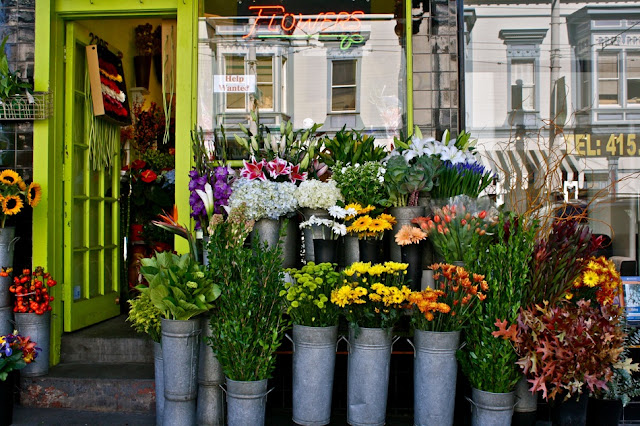
To the not-knowing who are just meandering on Haiphong Road, the Food Bazaar tucked away inside Hong Kong's Haiphong Market is almost non-existent except for the dull and grimy sign that gives any indication to its presence. Located directly the bridge, Haiphong Market itself is not that difficult to miss given the several flower and fruit vendors at the entrance. We walked into the market only knowing that we should head straight on to get to the Food Bazaar hidden inside Haiphong Market but beyond that, we were not sure where or how to stay on the right track. In front of us were several people in business casual attire as well as suits, and we figured they must be headed to the Food Bazaar for their lunch (otherwise, what would they be doing at Haiphong Market at that hour with that type of attire?). We followed behind them and found ourselves in a busy no-frills food market.

The minute we stepped into the Food Bazaar, the first vendor was there to wave us over and say in Cantonese, "Come, have a seat. What would you like to eat?" I looked at this stall but that wasn't what we there to eat. Every food stall's signage was in Chinese without a single trace of English. We kept walking through the food bazaar only to have other vendors welcome us to take a sit at a table near their stall. All we knew was that we were there for Fat Kee, the most famous stall at the Food Bazaar, which serves beef balls. The bazaar wasn't huge by all means but not knowing where to get our anticipated beef balls proved to be a tad bit tricky until when suddenly, a lady from one of the stalls piped up and said to us, "Would you like to eat beef balls?" I lit up and just to be sure I heard her right in my conversational level of Cantonese fluency, I asked her in my half-accented Cantonese, "You serve beef balls?", and to which she replied, "Yes, beef balls. Come, have a seat."
The beef balls were extremely smooth and free from any traces of tendon that sometimes make meat balls not as smooth as they could potentially be. Having just arrived in Hong Kong that afternoon, we were tremendously happy campers. Fat Kee clearly knew how to make their beef balls right. The hor fun (flat rice noodles) was slippery and smooth. The first spoonful of broth was equally impressive in taste, as if some Chinese preserved vegetables were used in simmering the broth.
Halfway through being in beef ball heaven, we overheard a solo customer ordering beef brisket from Fat Kee. I looked at T, who does not speak Cantonese, and told him that someone just ordered beef brisket. Fat Kee has beef brisket too! At that time, my confidence in conversing Cantonese was beginning to rise a little and I put in an order of beef brisket for us to share. Served with broth, the brisket was served in bite size pieces. It was extremely tasty but the beef balls will always have a special place in our stomachs.
Each bowl only costs HK$24 (~US$3) which is extremely affordable for such delicious and comforting food. Yes, the Chinese are stereotyped for being Math whiz but sometimes they like to have it the easy as well, as seen from this sign stuck on the wall which helps them figure out the total for the bill based on the number of bowls ordered.
One of the employees shared a table with us (also another part of Hong Kong culture) while having his meal and proceeded to have a long chat with us. Fat Kee has been in business for the past 45 years, and it is always wonderful to see long established business continuing to thrive as modern eateries are coming into play. Seeing that everyone at the Food Bazaar was local, I asked about the usual customer base and apparently there is a fair share of Europeans who visit as well. We also learnt that the Food Bazaar is a popular choice for people traveling to Hong Kong as part of India's filming industry. In the part of our conversation, the employee at Fat Kee encouraged us to visit Hong Kong often and contribute to its economy.
If there was a rating scale for trendiness, Haiphong Market's Food Bazaar ranks at the extreme opposite end of the trendiest restaurant you will find in Hong Kong. But as what the bazaar is set up for, go for the food and absorb the local experience around you.
--
Fat Kee
Haiphong Market Food Bazaar
Haiphong Road
Tsim Sha Tsui, Kowloon
Hong Kong


































































